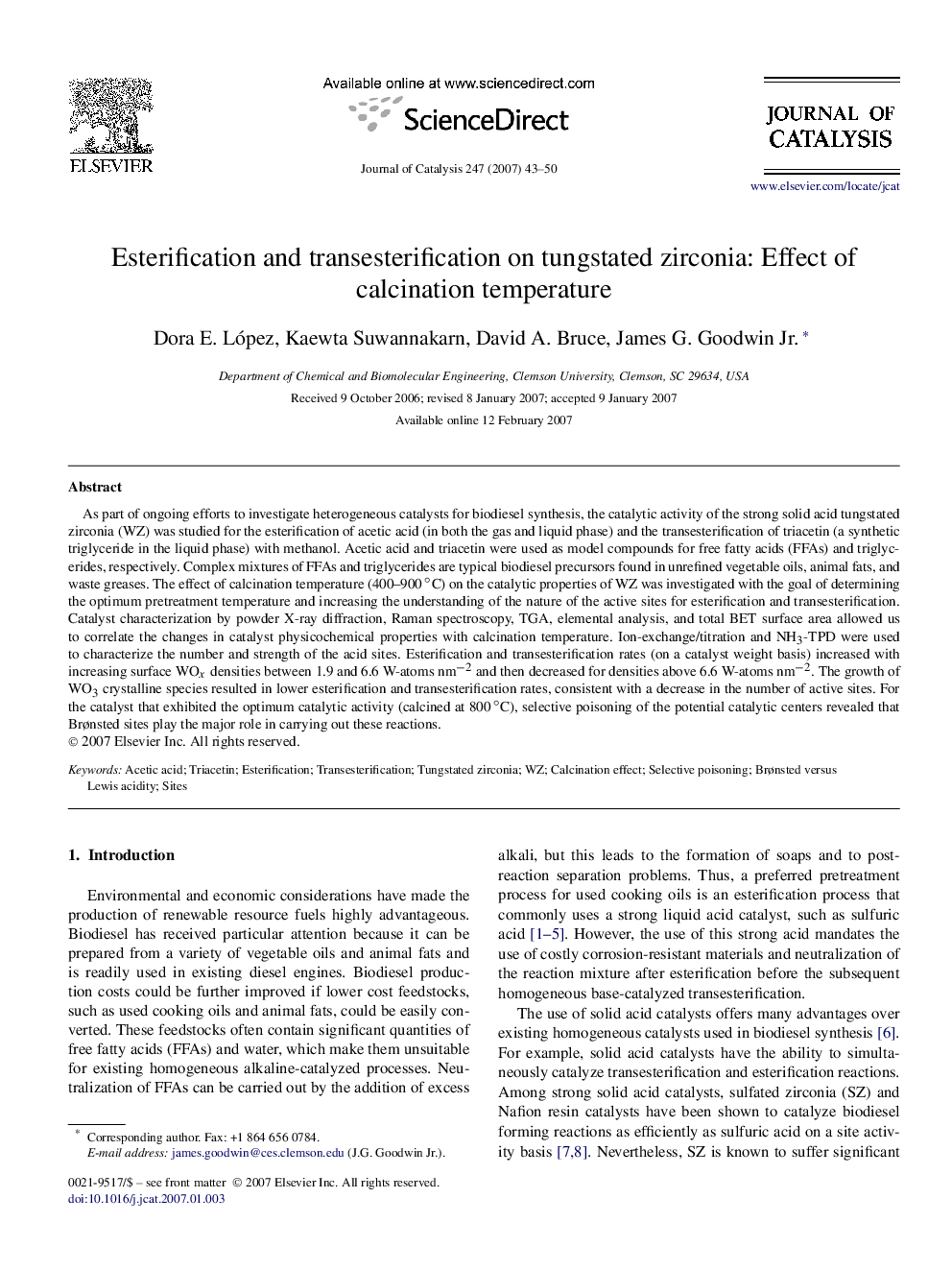| کد مقاله | کد نشریه | سال انتشار | مقاله انگلیسی | نسخه تمام متن |
|---|---|---|---|---|
| 62883 | 47661 | 2007 | 8 صفحه PDF | دانلود رایگان |

As part of ongoing efforts to investigate heterogeneous catalysts for biodiesel synthesis, the catalytic activity of the strong solid acid tungstated zirconia (WZ) was studied for the esterification of acetic acid (in both the gas and liquid phase) and the transesterification of triacetin (a synthetic triglyceride in the liquid phase) with methanol. Acetic acid and triacetin were used as model compounds for free fatty acids (FFAs) and triglycerides, respectively. Complex mixtures of FFAs and triglycerides are typical biodiesel precursors found in unrefined vegetable oils, animal fats, and waste greases. The effect of calcination temperature (400–900 °C) on the catalytic properties of WZ was investigated with the goal of determining the optimum pretreatment temperature and increasing the understanding of the nature of the active sites for esterification and transesterification. Catalyst characterization by powder X-ray diffraction, Raman spectroscopy, TGA, elemental analysis, and total BET surface area allowed us to correlate the changes in catalyst physicochemical properties with calcination temperature. Ion-exchange/titration and NH3-TPD were used to characterize the number and strength of the acid sites. Esterification and transesterification rates (on a catalyst weight basis) increased with increasing surface WOx densities between 1.9 and 6.6 W-atoms nm−2 and then decreased for densities above 6.6 W-atoms nm−2. The growth of WO3 crystalline species resulted in lower esterification and transesterification rates, consistent with a decrease in the number of active sites. For the catalyst that exhibited the optimum catalytic activity (calcined at 800 °C), selective poisoning of the potential catalytic centers revealed that Brønsted sites play the major role in carrying out these reactions.
Journal: Journal of Catalysis - Volume 247, Issue 1, 1 April 2007, Pages 43–50